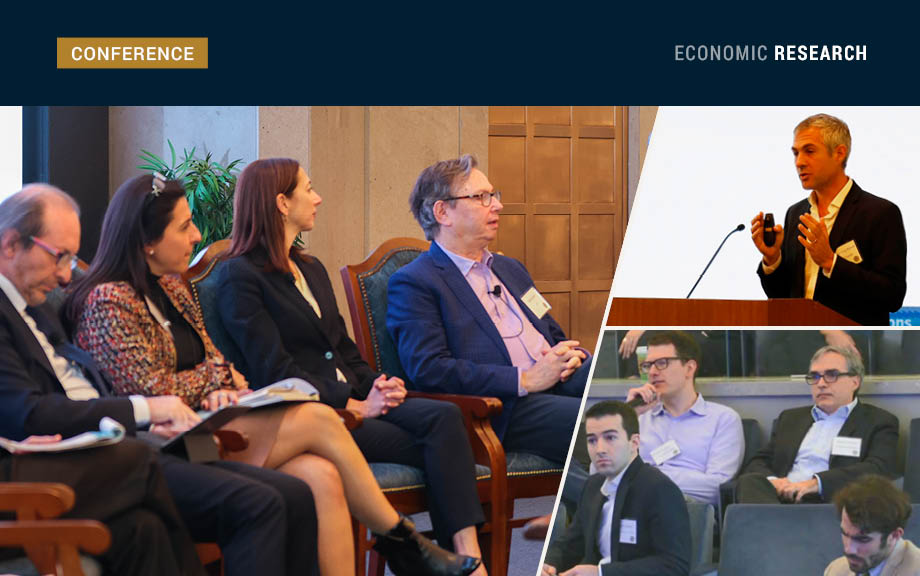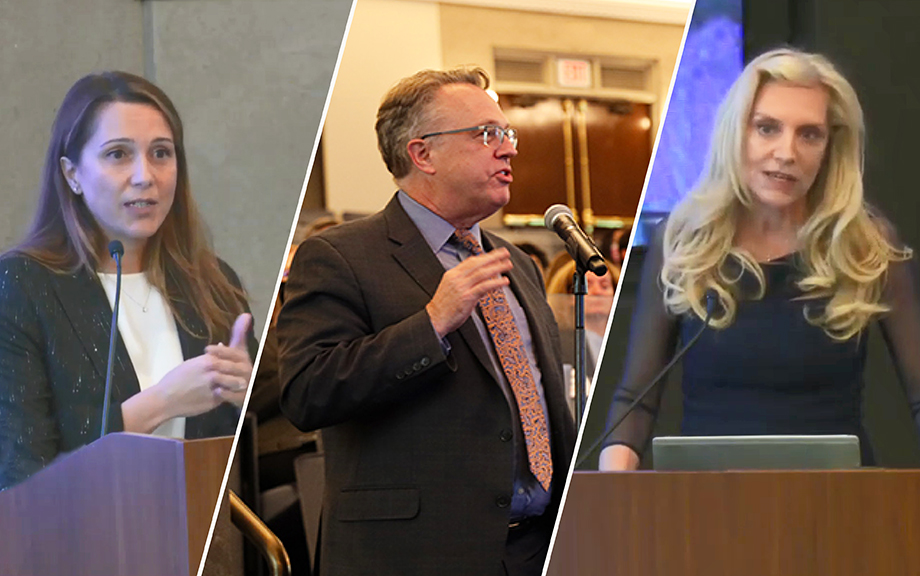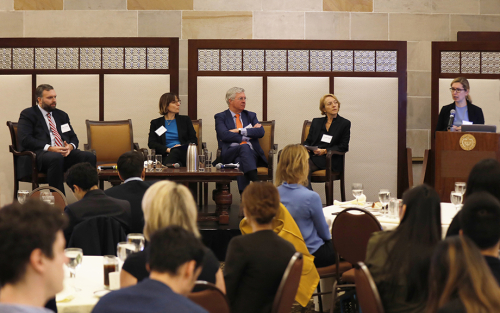Highlights from the Fifth Bi‑annual Global Research Forum on International Macroeconomics and Finance

The COVID-19 pandemic, geopolitical tensions, and distinct economic conditions bring challenges to economies worldwide. These key themes provided a backdrop for the fifth bi-annual Global Research Forum on International Macroeconomics and Finance, organized by the European Central Bank (ECB), the Federal Reserve Board, and Federal Reserve Bank of New York in New York in November. The papers and discussions framed important issues related to the global economy and financial markets, and explored the implications of policies that central banks and other official sector bodies take to address geopolitical developments and conditions affecting growth, inflation, and financial stability. A distinguished panel of experts shared diverse perspectives on the drivers of and prospects for inflation from a global perspective. In this post, we discuss highlights of the conference. The event page includes links to videos for each session.
How Is the Corporate Bond Market Functioning as Interest Rates Increase?

The Federal Open Market Committee (FOMC) has increased the target interest rate by 3.75 percentage points since March 17, 2022. In this post we examine how corporate bond market functioning has evolved along with the changes in monetary policy through the lens of the U.S. Corporate Bond Market Distress Index (CMDI). We compare this evolution to the 2015 tightening cycle for context on how bond market conditions have evolved as rates increase. The overall CMDI has deteriorated but remains close to historical medians. The investment-grade CMDI index has deteriorated more than the high-yield, driven by low levels of primary market issuance.
Federal Reserve System Conference on the Financial Stability Considerations for Monetary Policy

How does monetary policy affect financial vulnerabilities and, in turn, how does the state of the financial system interact with the maximum employment and price stability goals of monetary policy? These were the key questions covered in the September 30 conference organized by the Federal Reserve System. The conference was co-led by Federal Reserve Board Vice Chair Lael Brainard and Federal Reserve Bank of New York President and CEO John C. Williams, each of whom offered prepared remarks. The program also included a panel of current and former central bank policymakers to explore the themes of the conference, as well as paper presentations with discussants. In this post, we discuss highlights of the conference. The agenda includes links to all of the presentations as well as videos for each session.
How Can Safe Asset Markets Be Fragile?

The market for U.S. Treasury securities experienced extreme stress in March 2020, when prices dropped precipitously (yields spiked) over a period of about two weeks. This was highly unusual, as Treasury prices typically increase during times of stress. Using a theoretical model, we show that markets for safe assets can be fragile due to strategic interactions among investors who hold Treasury securities for their liquidity characteristics. Worried about having to sell at potentially worse prices in the future, such investors may sell preemptively, leading to self-fulfilling “market runs” that are similar to traditional bank runs in some respects.
Climate Change and Financial Stability: The Weather Channel

Climate change could affect banks and the financial systems they anchor through various channels: increasingly extreme weather is one (Financial Stability Board, Basel Committee on Bank Supervision). In our recent staff report, we size up this channel by studying how U.S. banks, large and small, fared against disasters past. We find even the most destructive disasters had insignificant or small effects on bank stability and small and positive effects on bank income. We conjecture that recovery lending after disasters helps stabilize larger banks while smaller, local banks’ knowledge of “unmarked” (flood) hazards may help them navigate disaster risk. Federal disaster aid seems not to act as a bank stabilizer.
The Term Spread as a Predictor of Financial Instability

The term spread is the difference between interest rates on short- and long-dated government securities. It is often referred to as a predictor of the business cycle. In particular, inversions of the yield curve—a negative term spread—are considered an early warning sign. Such inversions typically receive a lot of attention in policy debates when they […]
State‑of‑the‑Field Conference on Cyber Risk to Financial Stability

The Federal Reserve Bank of New York partnered with Columbia University’s School of International and Public Affairs (SIPA) for the second annual State-of-the-Field Conference on Cyber Risk to Financial Stability on December 14-15, 2020. Hosted virtually due to the COVID-19 pandemic, the conference took place amidst the unfolding news of a cyberattack against a major cybersecurity vendor and software vendor, underscoring vulnerabilities from cyber risk.
How Has COVID‑19 Affected Banking System Vulnerability?
Kristian Blickle, Matteo Crosignani, Fernando Duarte, Thomas Eisenbach, Fulvia Fringuellotti, and Anna Kovner The COVID-19 pandemic has led to significant changes in banks’ balance sheets. To understand how these changes have affected the stability of the U.S. banking system, we provide an update of four analytical models that aim to capture different aspects of banking system […]
At the New York Fed: Fourteenth Annual Joint Conference with NYU‑Stern on Financial Intermediation

Blickle, Kovner, and Viswanathan share a synopsis of a recent conference featuring new research in financial intermediation and expert perspectives on corporate credit markets.
Is There Too Much Business Debt?

Anna Kovner and Brandon Zborowski By many measures nonfinancial corporate debt has been increasing as a share of GDP and assets since 2010. As the May Federal Reserve Financial Stability Report explained, high business debt can be a financial stability risk because heavily indebted corporations may need to cut back spending more sharply when shocks […]










 RSS Feed
RSS Feed Follow Liberty Street Economics
Follow Liberty Street Economics